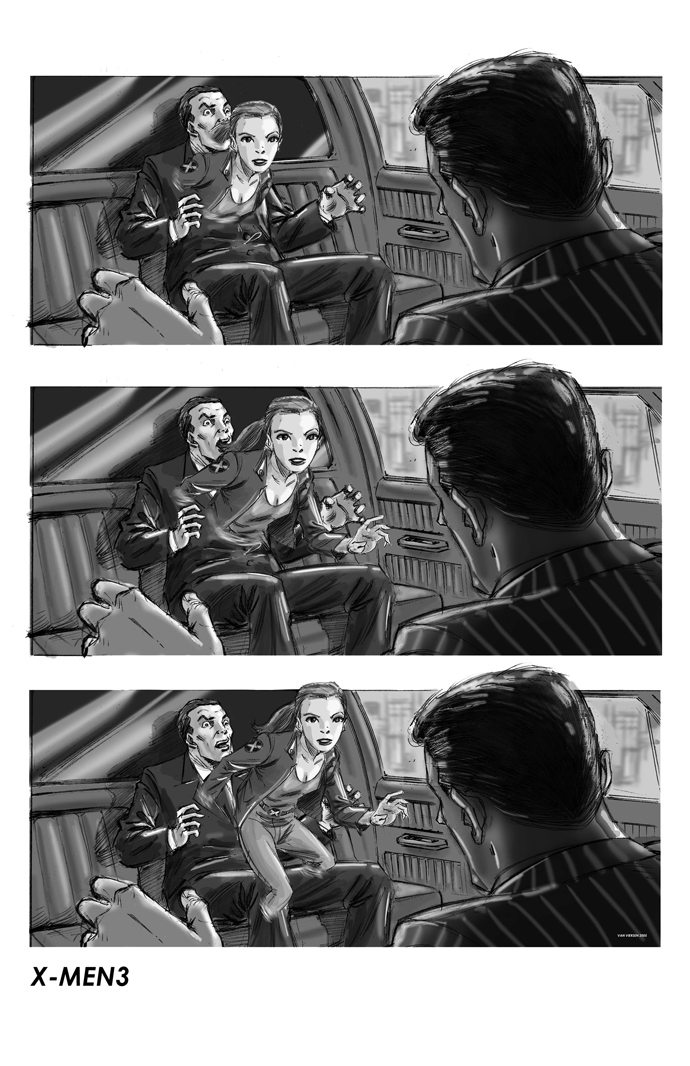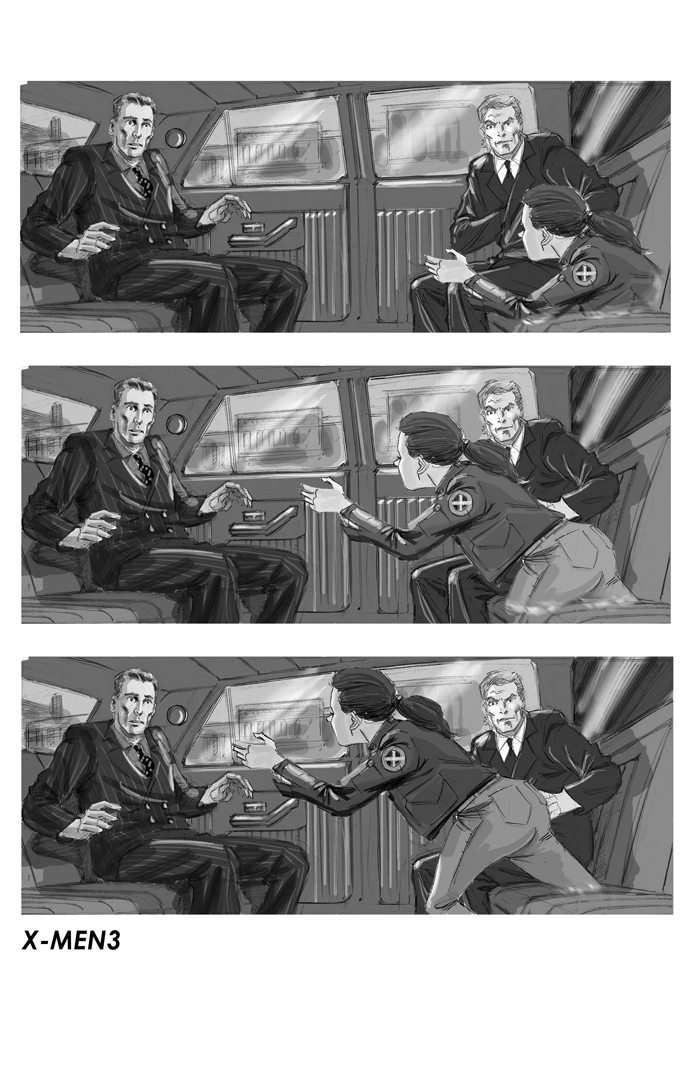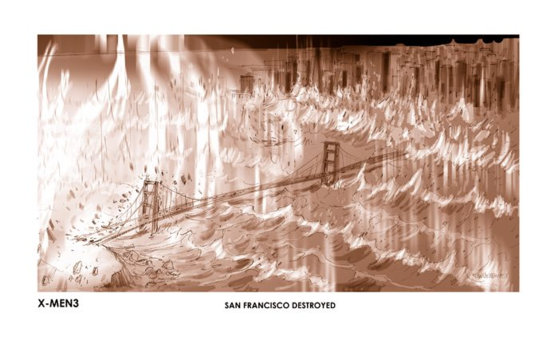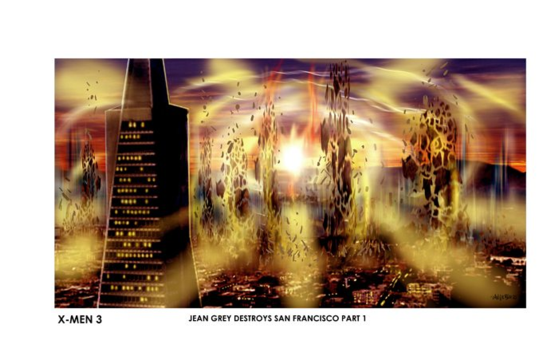In a multi-part series, Comic Book Film Editor William Gatevackes will be tracing the history of comic book movies from the earliest days of the film serials to today’s big blockbusters and beyond. Along with the history lesson, Bill will be covering some of the most prominent comic book films over the years and why they were so special. Today, the X-Men sequels prove that having a bigger budget can be both a good and a bad thing.
X-Men was a hit. Obviously, that meant sequels, but it also meant opportunity. It meant bigger budgets. This, in turn, meant that characters that were too expensive to portray on screen could make the jump. Plot lines that would have cost too much money could now be considered. It also meant pressure to perform. The stakes had to be bigger, the risks riskier, and the show must go on no matter what. The two official sequels to X-Men show the good and bad points about this new reality.
Bryan Singer showed what good could be done with a bigger budget with X2: X-Men United.
 This film set a number of precedents. First off, it was one of the first X-films to be quasi-adapted from an existing comic book storyline, in this case, Chris Claremont and Brent Anderson’s 1982 graphic novel, . It also is the start of loading the film with iconic mutants from the comic book’s long history.
This film set a number of precedents. First off, it was one of the first X-films to be quasi-adapted from an existing comic book storyline, in this case, Chris Claremont and Brent Anderson’s 1982 graphic novel, . It also is the start of loading the film with iconic mutants from the comic book’s long history.
The script, written by David Hayter and rewritten by Michael Dougherty and Dan Harris based on a story by Hayter, Singer and Zak Penn, makes minor changes to the original graphic novel. In the comics, William Stryker is a televangelist (who were quite popular when Claremont wrote the story) who kidnaps Professor Xavier in an attempt to use his mental powers, amplified by Cerebro, to kill all mutants, who he considers tools of Satan. The X-Men, teaming with their arch-enemy Magneto, eventually rescue Xavier and foil Stryker’s plot.
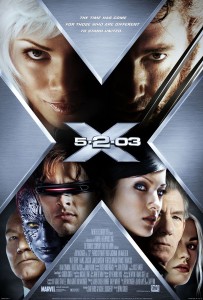 The film changes Stryker from a preacher to a military scientist. In the comics, Stryker killed his newborn mutant daughter with his bare hands. In the film, he uses his mutant son’s reality altering powers to brainwash mutants to serve him, gain information from suspects such as the imprisoned Magneto, and to trick Xavier to do his bidding. This Stryker also has ties to Wolverine’s origins, which would be further developed in X-Men Origins: Wolverine.
The film changes Stryker from a preacher to a military scientist. In the comics, Stryker killed his newborn mutant daughter with his bare hands. In the film, he uses his mutant son’s reality altering powers to brainwash mutants to serve him, gain information from suspects such as the imprisoned Magneto, and to trick Xavier to do his bidding. This Stryker also has ties to Wolverine’s origins, which would be further developed in X-Men Origins: Wolverine.
The film also introduces new characters from the comics into the mix—Nightcrawler, the German mutant with blue skin and the ability to teleport is brought to life by Alan Cummings and Stryker’s henchwoman is changed from the rather plain Anne Reynolds in the comics to Wolverine villain Lady Deathstrike, portrayed by Kelly Hu. In addition, Iceman and Pyro had their cameos from the first film upgraded to supporting roles and Colossus gets a cameo as a student at the school. It could have had more too. Even though this film had a higher budget than X-Men, some mutants ended up on the cutting room floor. As late as a production draft dated April 30, 2002, Toad was back as one of Stryker’s brainwashed henchmen, Gambit and Marrow make cameos as mutants suffering as Stryker’s plan goes into effect, Hank McCoy/Beast’s cameo was extended by placing him in the above montage transforming into his blue bestial form through the attack, and Wolverine blows off steam in the Danger Room (again) before Stryker’s forces attack the X-mansion. None of these made the final cut.
 X2: X-Men United was the high watermark for the series. It was a great movie filled with great scenes, most notably Wolverine cutting loose on Stryker’s team during their attack. And the allegory for persecution took on a personal level as the film examined negative familiar reaction to having a child being a mutant, ranging from Iceman’s mom asking “Have you ever tried… not being a mutant?” to Stryker’s treating his own mutant son like an inhuman beast. Definitely the best of the series, and Singer set up the next sequel to be even better, setting it up as an adaption of the legendary X-men storyline “The Dark Phoenix Saga” (something he added in after the above production draft, because while Jean Grey dies in the film, she makes it out alive in the script). Unfortunately, this was not to be, at least not in the way Singer intended, although we did finally get the long-awaited Danger Room in the next sequel.
X2: X-Men United was the high watermark for the series. It was a great movie filled with great scenes, most notably Wolverine cutting loose on Stryker’s team during their attack. And the allegory for persecution took on a personal level as the film examined negative familiar reaction to having a child being a mutant, ranging from Iceman’s mom asking “Have you ever tried… not being a mutant?” to Stryker’s treating his own mutant son like an inhuman beast. Definitely the best of the series, and Singer set up the next sequel to be even better, setting it up as an adaption of the legendary X-men storyline “The Dark Phoenix Saga” (something he added in after the above production draft, because while Jean Grey dies in the film, she makes it out alive in the script). Unfortunately, this was not to be, at least not in the way Singer intended, although we did finally get the long-awaited Danger Room in the next sequel.

 Singer, with returning writers Harris and Dougherty, intended to delve into the storyline in X-Men 3. In the comics, Jean Grey sacrifices her life to save her teammates much like she did at the end of X2 (in the comics, it was piloting a space shuttle through solar flares so they can return home safely). After crash landing in the ocean, Jean Grey transforms into the omnipotent Phoenix, a being of unimaginable power that Grey consciously self-imposes limits on. However, after being mentally manipulated by a villain called Mastermind for an organization called The Hellfire Club, Grey loses control over the Phoenix entity. She becomes corrupted by the power and becomes the Dark Phoenix. She flies off to a distant star and consumes its energy, killing billions of residents of its galaxy. This brings her to the attention of an interstellar tribunal, who agree that she is too dangerous to live. Jean Grey regains control of the Phoenix entity after a battle with the X-Men back on Earth, just in time for her and her teammates to be kidnapped by aliens set on carrying out the death penalty on the Phoenix. The X-Men argue for the right to fight for Jean’s life, and engage in combat with an alien superhero team called the Imperial Guard. Before the fight is over, due to the stress of the battle, Jean feels her consciousness begin to be permanently erased and replaced by the Phoenix. As her last independent act, Jean commits suicide rather than allowing the Phoenix to kill again.
Singer, with returning writers Harris and Dougherty, intended to delve into the storyline in X-Men 3. In the comics, Jean Grey sacrifices her life to save her teammates much like she did at the end of X2 (in the comics, it was piloting a space shuttle through solar flares so they can return home safely). After crash landing in the ocean, Jean Grey transforms into the omnipotent Phoenix, a being of unimaginable power that Grey consciously self-imposes limits on. However, after being mentally manipulated by a villain called Mastermind for an organization called The Hellfire Club, Grey loses control over the Phoenix entity. She becomes corrupted by the power and becomes the Dark Phoenix. She flies off to a distant star and consumes its energy, killing billions of residents of its galaxy. This brings her to the attention of an interstellar tribunal, who agree that she is too dangerous to live. Jean Grey regains control of the Phoenix entity after a battle with the X-Men back on Earth, just in time for her and her teammates to be kidnapped by aliens set on carrying out the death penalty on the Phoenix. The X-Men argue for the right to fight for Jean’s life, and engage in combat with an alien superhero team called the Imperial Guard. Before the fight is over, due to the stress of the battle, Jean feels her consciousness begin to be permanently erased and replaced by the Phoenix. As her last independent act, Jean commits suicide rather than allowing the Phoenix to kill again.
To say this storyline is one of the most important storylines in comic books would be an understatement. It can be argued that it ranks up there with Watchmen and The Dark Knight Returns as one of the best superhero stories ever told. It was arguably the story that established the X-Men as Marvel’s best book, and it was a storyline deserving of respect if it was to be adapted.
Singer’s approach would have treated the storyline with the respect it needed. First off, the entire movie would have been devoted to the story. As in the comics, Jean would come back as the Phoenix, only to be manipulated by the Hellfire Club (this time by Emma Frost, who they had Sigourney Weaver tapped to play). Jean loses control and wreaks havoc across the globe, including destroying San Francisco before eventually forcing Cyclops to kill her with his optic blasts. While her body dies, her spirit, in the form of a phoenix, becomes one with the universe. The film would have also introduced Gambit into continuity, with Keanu Reeves in line to play the Cajun.
Unfortunately, this was not meant to be. Singer signed on in July 2004 to direct Superman Returns and took Harris, Dougherty, James Marsden (Cyclops) and composer John Ottman with him. He fully intended to come back to X3 (he had storyboards made, which you see with this article), but Fox, acting like a jilted lover, decided not to wait and went on without him. Zak Penn and Simon Kinberg were tapped to deliver a script. Fox went through a laundry list of potential directors. Joss Whedon (whose comic book X-Men story “Gifted” was to become part of the plot) passed due to his work developing the ill-fated Wonder Woman project. Alex Proyas was offered the job, but still had bad feelings with Fox over I, Robot. Zack Snyder was offered the chair but was involved with 300 at the time and passed. Eventually, in March of 2005, they got their director—Matthew Vaughn.
 Vaughn began casting the film, choosing his regular Vinnie Jones for Juggernaut, Kelsey Grammer for the Beast, and Dania Ramirez for Callisto. But family matters and Fox’s unwillingness to budge from their May 2006 release date (so they could beat Superman Returns into theaters, natch) caused Vaughn to drop out. Under the gun, Fox hired Brett Ratner to fill in.
Vaughn began casting the film, choosing his regular Vinnie Jones for Juggernaut, Kelsey Grammer for the Beast, and Dania Ramirez for Callisto. But family matters and Fox’s unwillingness to budge from their May 2006 release date (so they could beat Superman Returns into theaters, natch) caused Vaughn to drop out. Under the gun, Fox hired Brett Ratner to fill in.
Now, I don’t hate X-Men: The Last Stand as much as other writers here at FBOL, but that’s only because I knew that the film would never do justice to the Dark Phoenix storyline since it had essentially become the B plot of the film. So, I expected the film to be a fiery train wreck with blood, offal and body parts strewn as far as the eye can see. When we got a mild derailment with most of the gore and carnage kept inside the train cars, I considered it a success.
Which isn’t to say that I think it’s a great film. It’s not. And when it stumbles, it stumbles in a big way.
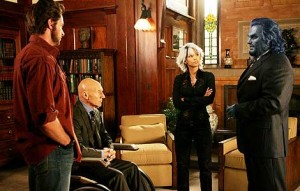 Granted, we finally got the Danger Room with a passing glance at the Sentinels, and we finally got Beast, Angel and a fully iced Iceman. But we also got unnecessary, studio mandated deaths of Cyclops (Marsden was willing coordinate his schedules to work on both X-Men: The Last Stand and Superman Returns, but Fox, who wasn’t bitter at all, ordered Cyke to take a dirt nap) and Professor Xavier. But Xavier’s death was a mercy killing because this film replaced the noble, kind and gentle Xavier of the first two films with a snide, manipulative, and darker character. Rogue’s character spit in the face of all the subtext and social commentary of the series up to this point. The first two films show us that being different is okay and that you should stand up to all those who tell you different. Rogue’s character arc in this film, which has her opt for the cure that removes her mutant powers, says that if you are different you should do whatever you can to change yourself so you can become what other people think are normal, especially if there was a cute boy involved.
Granted, we finally got the Danger Room with a passing glance at the Sentinels, and we finally got Beast, Angel and a fully iced Iceman. But we also got unnecessary, studio mandated deaths of Cyclops (Marsden was willing coordinate his schedules to work on both X-Men: The Last Stand and Superman Returns, but Fox, who wasn’t bitter at all, ordered Cyke to take a dirt nap) and Professor Xavier. But Xavier’s death was a mercy killing because this film replaced the noble, kind and gentle Xavier of the first two films with a snide, manipulative, and darker character. Rogue’s character spit in the face of all the subtext and social commentary of the series up to this point. The first two films show us that being different is okay and that you should stand up to all those who tell you different. Rogue’s character arc in this film, which has her opt for the cure that removes her mutant powers, says that if you are different you should do whatever you can to change yourself so you can become what other people think are normal, especially if there was a cute boy involved.
Other than that, there were great performances from the cast (not surprising considering Ellen Page and Ben Foster were added this time around) and some good action scenes that make the film watchable if you can overlook all those bad things listed above.
At the time, this seemed like the lowest the franchise could go. Even though it more than doubled its $210 million dollar budget, becoming the highest grossing film in the franchise, it was still deemed a quasi-failure. A true sequel has yet to be made to this film, but two spinoffs did come about. And if you thought this one was bad, wait to you see the next film. But remember, it’s always darkest before the dawn. Next time, X-Men Origins: Wolverine and X-Men: First Class.



